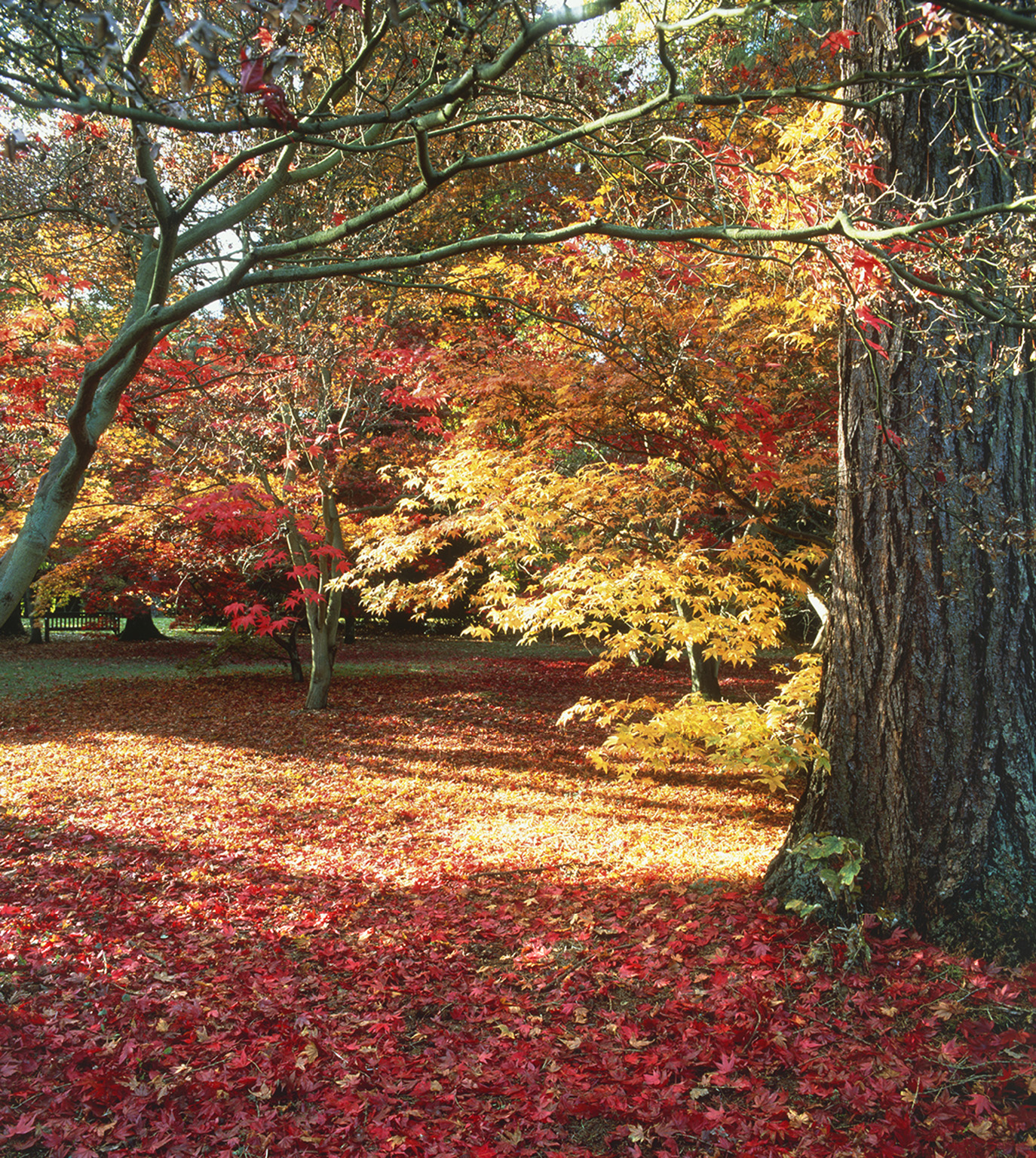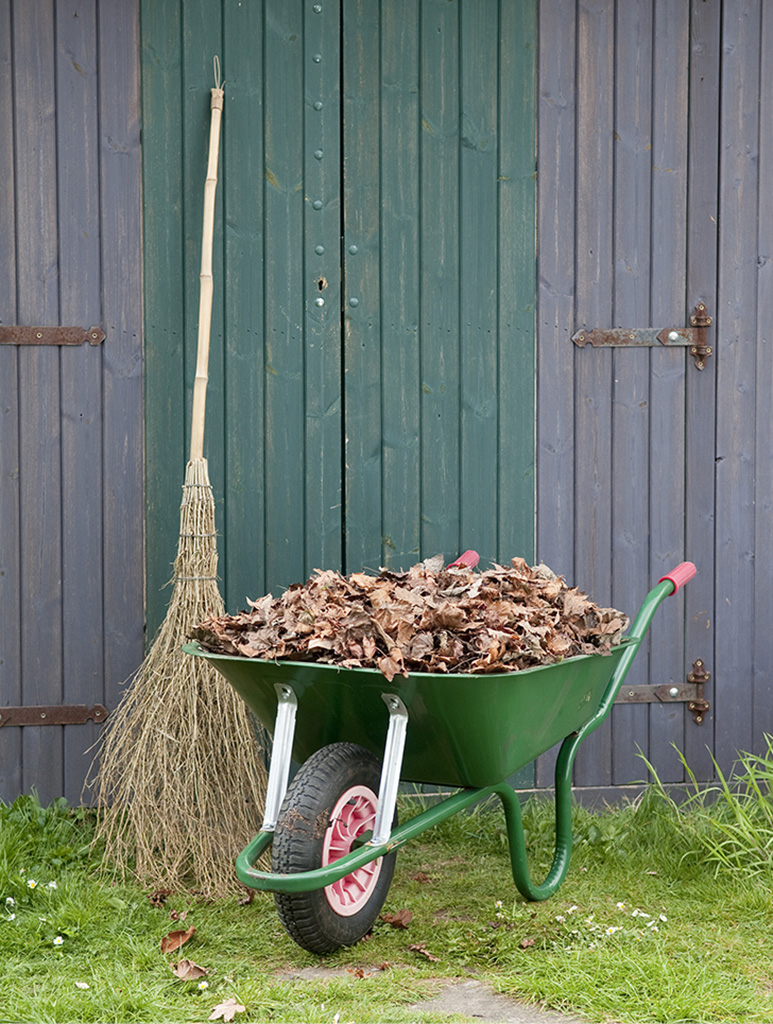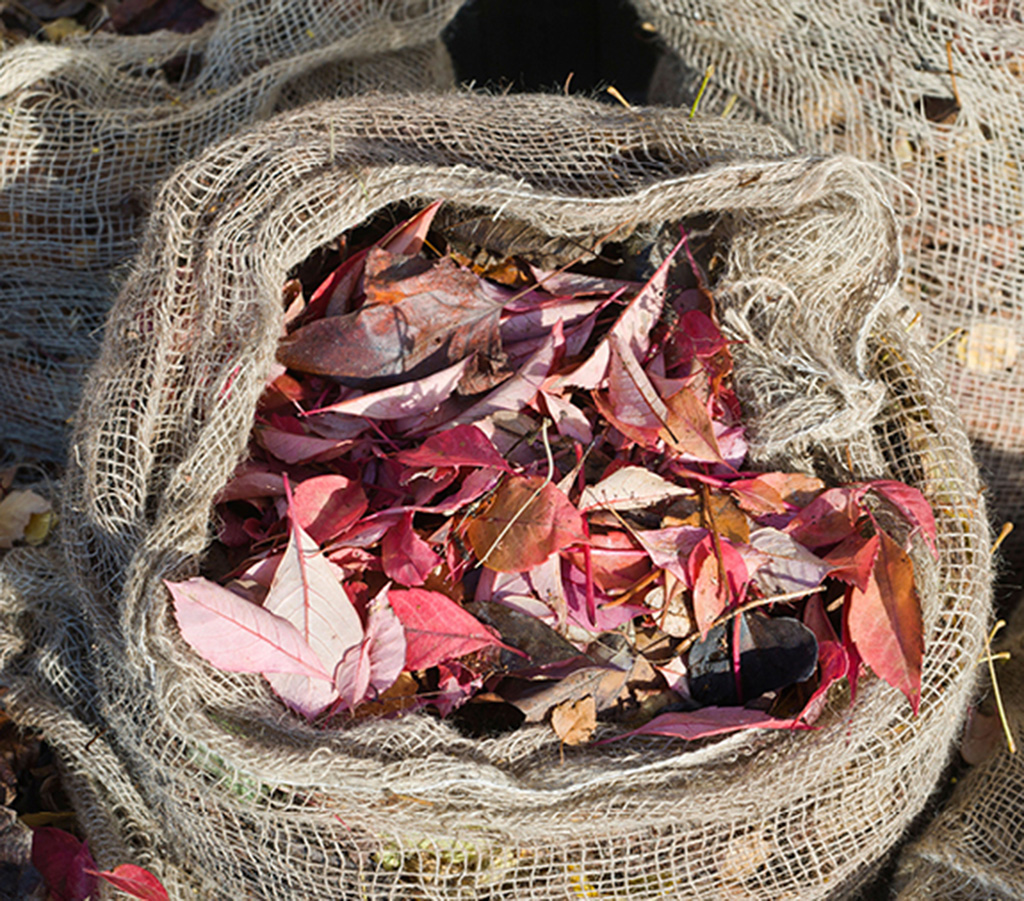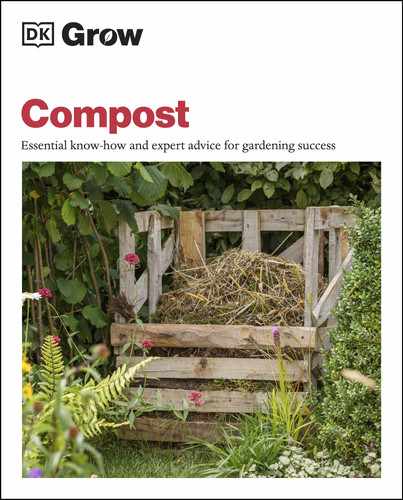Making leaf mold
Autumn leaves contain high levels of carbon and are decomposed primarily by fungi, which work more slowly than the bacteria that break down young green growth and kitchen scraps. You can add thin layers of leaves to your compost bin to balance the nitrogen-rich greens, but it is best to compost large volumes of deciduous tree leaves on their own. After a year or two, they make a crumbly material known as leaf mold, which can be used as a mulch, soil conditioner, or as an ingredient for homemade potting and seed-starting mixes.
Foliage facts
During the spring and summer, leaves contain 80 percent of the nutrients that deciduous trees and shrubs take up through their roots, but as autumn approaches, the plants reabsorb most of these chemicals. The dead leaves that fall are therefore low in nutrients but contain a high proportion of lignin, the fibrous material that makes up woody plants’ cell structures. Lignin is very slow to decompose, but it supports many forms of fungi that feed on it, including mycorrhizal fungi that help plant roots to absorb nutrients. When spread over the soil as a mulch, the rotted leaves populate the soil with these beneficial fungi while providing food for worms and other invertebrates.

In autumn, a deciduous tree reabsorbs nutrients in its leaves before they fall, to sustain it through the winter.

Transforming leaves from your garden into a free soil conditioner is easy but requires patience.
Collecting leaves
Use autumn leaves that are covering the hard surfaces and lawns in your garden, but allow those on beds and borders to decompose in situ. To speed up decomposition, you can put your mower’s blades on a high setting and run them over the leaves to shred them. Including grass clippings in the mix will also inject the finished leaf mold with some nitrogen.
You should not take leaves from natural woodlands because they play a crucial role in the natural cycling of nutrients, but you may be able to collect them from parks; seek permission before removing them. Avoid leaves found on busy roadsides, which will be coated with pollutants.
Foliage with a high lignin content, such as that of oak, chestnut, and beech, will decompose more slowly than hazel, willow, and maple leaves with lower levels, but they will all make good compost in the end. Fruit tree foliage may harbor scabs, rusts, blights, and other fungal diseases, so many experts advise against using it. Instead, bag up the leaves and take them to the municipal dump for hot composting.

Gather the leaves covering a lawn with a besom broom or rake.
Composting leaves
On a calm day, collect your leaves together and simply stuff them into an old plastic potting or seed compost bag, a burlap sack, or, if you have a large volume, a bag for builders’ waste material. Using a sharp knife, make some holes in the sides of the plastic or canvas bags to allow air to enter, and water the leaves if they are dry. Put the bags or sacks in a quiet corner of the garden, fold the tops over and keep them sealed with a brick or large stone on top. Alternatively, you can make a larger, more permanent container with chicken wire fixed to sturdy wooden or metal posts; when it is full, cover the leaves with cloth held down with stones or an old rug to keep them from blowing away.

Burlap bags are perfect for making leaf mold and can be added to the compost bin after they are no longer usable.

In a large garden, two chickenwire cages allow you to fill one while the leaf mold in the other is maturing.
Using leaf mold
After about one year, the leaves will have decomposed to produce a crumbly, rough-textured material that may contain visible shreds of foliage. This can be used as a mulch by spreading a 2in (5cm) layer over beds and borders, leaving a gap around the stems of woody plants. The mulch will protect the soil from winter rain which can wash out the nutrients. Worms will gradually take the leaf mold down into the soil too, where fungi and, later, bacteria will continue to decompose it, releasing nutrients for plants to use. One-year-old leaf mold also helps to aerate the soil, improves drainage, reduces weed growth, and makes a good topdressing for a lawn in autumn when it is applied sparingly over the grass.
If you have the patience to wait two years, the leaves will have transformed into a fine-textured material that can be used to make good-quality seed and potting mixes for free. They will have a lower carbon footprint than products from a garden center, too.

Cover the soil in raised beds with a thick layer of leaf mold to protect it over winter.
Making Compost | MAKING leaf mold
NEED TO KNOW
- Collect pine and other conifer needles in spring and compost them separately to make acidic leaf mold, which can be used to mulch ericaceous plants such as rhododendrons, azaleas, camellias, and blueberries. Needles will take two years to decompose.
- Do not include whole large evergreen leaves, such as holly, cherry laurel, and aucuba, which can take up to three years to decompose. Instead, use a mower to shred the foliage and add thin layers to a compost bin.
